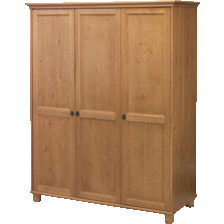RESEARCH PROJECTS

How do children’s brains process objects?
The adult brain can categorise images in fractions of a second, from individual identity to more abstract categories like animacy. Do children’s brains represent objects in the same way? In this project, we are looking to investigate object representations in pre-school children aged 4-5. The studies use electroencephalography (EEG) to examine how different object categories are represented in the brains of children, and how similar these representations are to adults. Children play a computer game catching aliens

What does it mean to be alive?
How do you know when something is alive? What if you have to make a quick decision? Both movement and naturalness seem to play a role: developmental research shows that kids fail to understand that plants are alive, and research in adults shows that things that are natural and can move but aren’t alive (e.g. clouds/lava) are often misclassified as alive under time pressure. This project seeks to explore the factors that influence judgements of aliveness. We are using EEG to look at how different aspects of objects, animals and plants are represented in the brain, both when focusing on aliveness and when completing an unrelated task.

Why does mental imagery differ from other forms of visual and auditory perception?
Usually when we see, our nervous system is processing a meaningless spatial distribution of light into meaningful shapes, concepts, and thoughts. However, the goal of imagination seems to be quite the opposite: turning a non-visual thought into a visual representation in space. The aim of this project is to determine how the brain carries out such a process, and why imagined images and sounds seem to have different properties to those which are perceived normally and during hallucinations. Our investigation uses simple computational models to explore theoretical explanations, as well as machine learning techniques applied to EEG recordings to analyse neural representations of imagined sounds and images.

What does the "face" part of the face say?
Physiognomy is the notionally debunked practice of assessing a person's character by way of their face. Yet there is a great deal of research that shows people are readily willing and able to derive many different judgements of a person; whether they are -in the viewer's eye- trustworthy, competent, assertive, likeable, based on their face alone. What remains (mostly) debunked is the idea that these assessments are ever close to accurate. Despite these inaccuracies the habit persists, even when a face is only seen for a fraction of a second, and the aim of this project is to explore what happens in the brain as it forms these rapid impressions, using the temporal precision of EEG recording. From this we plan to investigate the possible ways that context and task demands might modulate and transform the evolution, in real time, of how the many different kinds of face are represented in the brain.

Rapid-MVPA: Investigating how we process objects presented at very rapid rates
Humans have the remarkable capacity to detect and identify objects in fast-changing scenes. This project aims to understand this exceptional human ability with research using ultra-fast stimulus presentation rates multivariate decoding analyses applied to EEG.
Attentive tracking
Humans can track moving objects through occluders. In this project, we are using decoding methods in conjunction with EEG to understand the brain mechanisms that allow humans to represent objects that are not visible due to occlusion.
Do any of these projects spark your interest?
Want to know more?
For more information about the laboratory, including potentially joining the group as a volunteer or participating in a study, contact Alex Sulfaro at alexander.sulfaro@sydney.edu.au
If you're interested in joining formally as a Masters or PhD student, contact Thomas Carlson by email at thomas.carlson@sydney.edu.au
